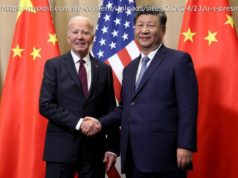President Donald Trump’s threat to impose tariffs on all imports from Mexico isn’t more of the same.
“The threat of tariffs on Mexico was completely off the market’s radar,” said Cliff Hodge, director of investments at Cornerstone Wealth Group. “No one has been talking about tariffs on Mexico.”
That changed Friday. The Dow plunged 355 points, or 1.4%, as investors agonized over the latest tariff threats. The S&P 500 and Nasdaq fell, too.
Markets had already been roiled by the re-escalation of the trade war between the United States and China. Even before the president mentioned new duties on Mexico, the Dow had been on track for its sixth consecutive weekly decline, its longest streak of that kind since June 2011. It hit that mark Friday.
The China problem isn’t going away. Beijing increased tariffs on $60 billion worth of US goods last week in retaliation for the latest hike from the United States. Talks are at a standstill, and China is now making very clear that it could pull American businesses into the fray.
But proposed tariffs on Mexico differ from the tariffs on Chinese exports in two important ways.
Multinational companies have for decades relied on the ability to freely transport goods between the United States and Mexico.
More than two-thirds of trade from Mexico consists of exchanges between US companies and their subsidiaries, according to aUS government report from 2017. Should that change, they’ll be in big trouble.
The United States could be looking at an “earnings recession that could flow through to an economic recession,” Hodge said.
The most vulnerable sector in this case is autos.
The industry imported $59.4 billion in parts from Mexico last year, according to US government trade data. Finished cars and trucks also come into the United States from Mexico. About 2.7 million autos were imported from Mexico last year, worth $52 billion, according to the US Commerce Department.
Home
United States
USA — Political Mexico is not China. Why investors should worry about the latest tariff...






